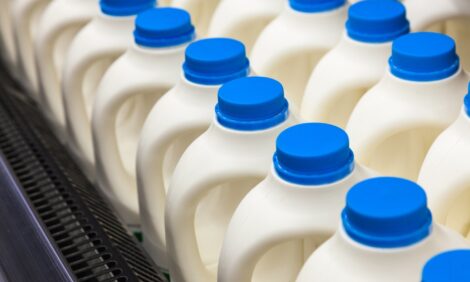



Livestock Margins Still Very Tight Despite Lower Input Costs
UK - Despite falling input costs livestock farmers still face a challenge to achieve positive margins when selling finished animals, according to the latest figures from Quality Meat Scotland’s Economics Services team.Livestock producers continue to face declines in farmgate prices for their finished animals, observed Stuart Ashworth, QMS head of Economics Services.
“The most marked year-on-year shortfall is in the pig sector where prices are trailing last year by 16 per cent but beef prices also trail last year,” said Mr Ashworth, observing hogg prices are also falling short of February 2015 levels.
“While it has to be recognised that some input costs have fallen, they have not fallen fast enough to allow many livestock farmers, and pig producers in particular, to maintain their margins.” said Mr Ashworth.
By their very nature, livestock growth rates are affected by a multitude of factors ranging from climate variation to genetic capability. For example, said Mr Ashworth, a period of wet or cold weather requires an animal to eat more feed just to maintain its frame before growing, thus reducing the benefit of falling animal feed prices.
“Improving or maximising the existing genetic capability of livestock is not a fast win. At one level it requires investment in animal science research and at the other a willingness and capital resource from producers to invest. Without a sufficient margin it is difficult to finance the investments needed to continue to drive efficiency into any business,” said Mr Ashworth.
Although producers recognise seasonal price variations, excessive price volatility makes it difficult for livestock producers to plan and invest in their businesses and may derail existing investment plans. There are, said Mr Ashworth, a number of factors driving price volatility and to address these a number of risk management options can be introduced.
Ultimately price volatility is driven by the balance between supply and demand, not only at a national level but also at a global level, he observed.
“Supply can be affected by climate and one example of this is the impact of droughts in the United States over the past two years. These led to significant declines in cattle numbers along with price increases which pushed US cattle prices to some of the highest in the world. As things return to a more normal situation beef production has increased and US cattle prices have fallen by around one-quarter in the past six months,” said Mr Ashworth.
Supplies can also be impacted by trade restrictions. During 2007 Scottish lamb prices collapsed when trade with Europe was halted following the last Foot and Mouth Disease outbreak, leaving increased volumes on the home market.
More recently, said Mr Ashworth, Russian restrictions on trade have destabilised the European pig market leading to a need to find alternative markets, in some cases at lower prices. In the short term this has resulted in increased volumes of pigmeat on the European market, forcing producer prices down.
Looking forward there are a number of measures that may open the European market to increased imports of meat, such as the free trade talks with the South American trading block Mercosur, the US, New Zealand and Australia. These, said Mr Ashworth, have the potential to add even greater volatility to farm gate prices but do little to increase EU and UK access to growing consumer markets.
“On the other side of the equation sits demand. While a growing world population is seen as a driver for increased consumption of meat, offsetting this is the level of income, as illustrated by the slowdown in China’s economic growth, where demand may remain but prices paid have to dip.
"Demand is also fickle in respect of dietary fashions, food related health scares, lifestyle changes and environmental and animal welfare messages,” stated Mr Ashworth.
Producers, he said, can only respond to this volatility by delivering product that meets the demands of the marketplace in respect of quality, provenance and product promotion. Some of the bigger elements of price volatility require political will and actions to mitigate, said Mr Ashworth.
“Generally price volatility moves quicker than the animal rearing process, meaning that prices received at the end of the rearing period can be very different from the expectation when the breeding and rearing process began,” said Mr Ashworth.
“Consequently measures to maximise the efficiency of the production process may offer the best risk management tool. To do this will often require investment and without profit to reinvest or investment support, the funding for investment in production efficiency will be held back,” he concluded.
TheCattleSite News Desk


